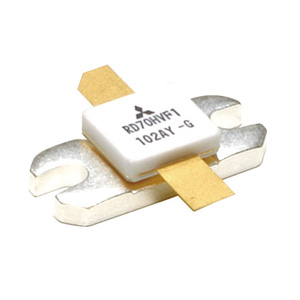MOSFET: Difference between revisions
No edit summary |
No edit summary |
||
| Line 20: | Line 20: | ||
Signal enters from the pre-amplifier stage into the MOSFET where the signal is amplified to approximately 50 watts using the MOSFET in the illustration. | Signal enters from the pre-amplifier stage into the MOSFET where the signal is amplified to approximately 50 watts using the MOSFET in the illustration. | ||
[[Category:Electronics]] | |||
[[Category:Electronic Components]] | |||
Revision as of 13:08, 30 May 2016
MOSFET MOS FET MOS-FET - Metal Oxide Semiconductor Field Effect Transistor
The MOSFET is a type of FET that works by electronically varying the width of a channel along which electrons flow. The width of the channel is controlled by the voltage on an electrode called the gate , which is located physically between the source and the drain and is insulated from the channel by an extremely thin layer of metal oxide.
MOSFET functional modes:
- depletion mode
- enhancement mode
The n-type or n-channel MOSFET is fabricated on a p-type semiconductor substrate. The complementary MOSFET is the p-type or p-channel MOSFET. It contains p-type source and drain regions in an n-type substrate. The inversion layer is formed when holes are attracted to the interface by a negative gate voltage. While the holes still flow from source to drain, they result in a negative drain current.
The most common use of the MOSFET in radio communication is for amplification. Modern solid state transceivers use the MOSFET for amplification in the final stage of a radio transceiver. The MOSFET provides current and voltage gain yielding an output current into an external load which exceeds the input current and an output voltage across that external load which exceeds the input voltage.
No gate current is required to maintain the inversion layer and the resulting current between drain and source on a MOSFET. The current gain is inversely proportional to the signal frequency, reaching unity current gain at the transit frequency. Because the current saturates at higher drain source voltage the result is a small drain current variation can cause a large drain voltage variation or a resulting voltage gain.
Unlike bipolar transistors, the gain of MOSFETs doesn't decrease at a 6db/octave rate as you go up in frequency. However, in certain conditions bipolar transistors have matched or bettered MOSFETs in terms of die-area-specific on-state resistance. In terms of general electronics, FETs can be used to replace normal bipolar junction transistors in most circuits.
An example of a MOSFET used as a PA or final state power amplifier:
Signal enters from the pre-amplifier stage into the MOSFET where the signal is amplified to approximately 50 watts using the MOSFET in the illustration.
